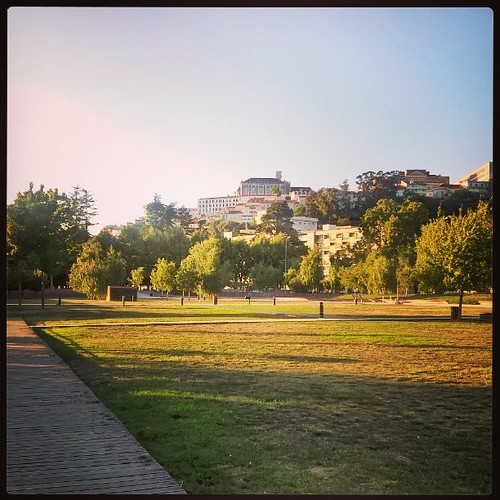Unclear whether this translates into an increase in nuclear Zn2+. Therefore we set out to monitor Zn2+ uptake in both theTable 2. Comparison of sensors with different fluorescent proteins.Sensor Name NLSZapSM2 NESZapSM2 NLSZapSR2 NESZapSR2 NLSZapOC2 NESZapOC2 NLSZapOK2 NESZapOK2 NLSZapCmR1 NESZapCmR1 NLSZapCmR1.1 NESZapCmR1.1 NLSZapCmR2 NESZapCmRIn vivo Dynamic Range (Rmax/Rmin) (Mean EM)1.1460.003 1.1360.01 1.1860.004 1.2160.01 1.1160.01 1.1360.01 1.160.01 1.0960.004 1.1560.01 1.1760.04 1.4460.5 1.5260.03 1.3860.02 1.3960.Percent Saturation at Rest [(R-RTPEN)/(RZnRTPEN)x100 91 63 6765 4863 3862 2262 2062 3264  3562 9262 8867 2266 1761 2461Rrest 0.89 1.05 0.55 0.52 0.88 0.74 0.93 1.09 1.02 1.07 1.22 1.43 1.38 1.Rmax-Rmin 0.11 0.15 0.1 0.1 0.12 0.13 0.06 0.08 0.15 0.18 0.4 0.6 0.4 0.*Each experiment was performed in triplicate and a minimum of 3? cells per field of view were observed. doi:10.1371/journal.pone.0049371.tAlternately Colored FRET Sensors for ZincFigure 4. Simultaneous monitoring of 58-49-1 web cytosolic and nuclear Zn2+ uptake. (A) Simultaneous imaging of NLS-ZapSR2 and NES-ZapCY2 in the same cell. (B) Simultaneous imaging of NLS-ZapOC2 and NES-ZapCY2 in the same cell. In both experiments 100 mM ZnCl2 was added at the time indicated. The rate of increase in the FRET ratio is essentially the same in both locations, suggesting similar rates for nuclear and cytosolic uptake. C) Left panel
3562 9262 8867 2266 1761 2461Rrest 0.89 1.05 0.55 0.52 0.88 0.74 0.93 1.09 1.02 1.07 1.22 1.43 1.38 1.Rmax-Rmin 0.11 0.15 0.1 0.1 0.12 0.13 0.06 0.08 0.15 0.18 0.4 0.6 0.4 0.*Each experiment was performed in triplicate and a minimum of 3? cells per field of view were observed. doi:10.1371/journal.pone.0049371.tAlternately Colored FRET Sensors for ZincFigure 4. Simultaneous monitoring of 58-49-1 web cytosolic and nuclear Zn2+ uptake. (A) Simultaneous imaging of NLS-ZapSR2 and NES-ZapCY2 in the same cell. (B) Simultaneous imaging of NLS-ZapOC2 and NES-ZapCY2 in the same cell. In both experiments 100 mM ZnCl2 was added at the time indicated. The rate of increase in the FRET ratio is essentially the same in both locations, suggesting similar rates for nuclear and cytosolic uptake. C) Left panel  (cytosol) is NES-ZapCY2 and circles represent ROI followed throughout experiment, middle panel represents NLS-ZapSR2, circles represent ROI (NLS-ZapOC2 not shown), and right panel represents NLS-ZapSR2 and NES-ZapCY2 merged. Images were bleedthrough corrected. Experiments were repeated at least five times with a minimum of 1? cells per experiment. Scale bar = 20 mm. doi:10.1371/journal.pone.0049371.gget Anlotinib cytosol and nucleus with the new sensors. Figure S5 depicts representative traces of each sensor in the cytosol upon elevation of extracellular Zn2+, confirming with the new sensors are sensitive enough for monitoring Zn2+ uptake. Figure S6 demonstrates that all nuclear sensors exhibit an increase in the FRET ratio, indicating that nuclear Zn2+ also rises under this experimental paradigm. Because ZapCmR1 was close to saturated under resting conditions, it was not used for uptake studies. While the Clover-mRuby2 sensors clearly represent superior green-red sensors, we wanted to test the limits of responsiveness of the low dynamic range sensors. Therefore, we cotransfected these sensors with a cytosolic CFP-YFP sensor to simultaneously monitor Zn2+ uptake into the nucleus and cytosol. Figure 4 reveals that two sensors (NLS-ZapSR2 and -ZapOC2) were sensitive enough to detect changes in nuclear Zn2+ when coupled with cytosolic ZapCY2. Moreover, under this experimental paradigm, the cytosol and nucleus accumulated Zn2+ with comparable rates, indicating that in defining the rate of Zn2+ uptake from the extracellular environment, localizing sensors to the nucleus could serve as a proxy for monitoring the rate of change of cytosolic Zn2+. NLS-ZapSR2 exhibited the largestFRET ratio change making it the preferable choice of low sensitivity sensors.Simultaneous Monitoring of Nuclear and Organelle Zn2+ UptakePrevious studies in our lab have demonstrated that intracellular organelles such the ER, Golgi, and mitochondria can accumulate Zn2+ when cytosolic Zn2+ levels become elevated, demonstrating these compartments play an important role in cytosolic clearance and.Unclear whether this translates into an increase in nuclear Zn2+. Therefore we set out to monitor Zn2+ uptake in both theTable 2. Comparison of sensors with different fluorescent proteins.Sensor Name NLSZapSM2 NESZapSM2 NLSZapSR2 NESZapSR2 NLSZapOC2 NESZapOC2 NLSZapOK2 NESZapOK2 NLSZapCmR1 NESZapCmR1 NLSZapCmR1.1 NESZapCmR1.1 NLSZapCmR2 NESZapCmRIn vivo Dynamic Range (Rmax/Rmin) (Mean EM)1.1460.003 1.1360.01 1.1860.004 1.2160.01 1.1160.01 1.1360.01 1.160.01 1.0960.004 1.1560.01 1.1760.04 1.4460.5 1.5260.03 1.3860.02 1.3960.Percent Saturation at Rest [(R-RTPEN)/(RZnRTPEN)x100 91 63 6765 4863 3862 2262 2062 3264 3562 9262 8867 2266 1761 2461Rrest 0.89 1.05 0.55 0.52 0.88 0.74 0.93 1.09 1.02 1.07 1.22 1.43 1.38 1.Rmax-Rmin 0.11 0.15 0.1 0.1 0.12 0.13 0.06 0.08 0.15 0.18 0.4 0.6 0.4 0.*Each experiment was performed in triplicate and a minimum of 3? cells per field of view were observed. doi:10.1371/journal.pone.0049371.tAlternately Colored FRET Sensors for ZincFigure 4. Simultaneous monitoring of cytosolic and nuclear Zn2+ uptake. (A) Simultaneous imaging of NLS-ZapSR2 and NES-ZapCY2 in the same cell. (B) Simultaneous imaging of NLS-ZapOC2 and NES-ZapCY2 in the same cell. In both experiments 100 mM ZnCl2 was added at the time indicated. The rate of increase in the FRET ratio is essentially the same in both locations, suggesting similar rates for nuclear and cytosolic uptake. C) Left panel (cytosol) is NES-ZapCY2 and circles represent ROI followed throughout experiment, middle panel represents NLS-ZapSR2, circles represent ROI (NLS-ZapOC2 not shown), and right panel represents NLS-ZapSR2 and NES-ZapCY2 merged. Images were bleedthrough corrected. Experiments were repeated at least five times with a minimum of 1? cells per experiment. Scale bar = 20 mm. doi:10.1371/journal.pone.0049371.gcytosol and nucleus with the new sensors. Figure S5 depicts representative traces of each sensor in the cytosol upon elevation of extracellular Zn2+, confirming with the new sensors are sensitive enough for monitoring Zn2+ uptake. Figure S6 demonstrates that all nuclear sensors exhibit an increase in the FRET ratio, indicating that nuclear Zn2+ also rises under this experimental paradigm. Because ZapCmR1 was close to saturated under resting conditions, it was not used for uptake studies. While the Clover-mRuby2 sensors clearly represent superior green-red sensors, we wanted to test the limits of responsiveness of the low dynamic range sensors. Therefore, we cotransfected these sensors with a cytosolic CFP-YFP sensor to simultaneously monitor Zn2+ uptake into the nucleus and cytosol. Figure 4 reveals that two sensors (NLS-ZapSR2 and -ZapOC2) were sensitive enough to detect changes in nuclear Zn2+ when coupled with cytosolic ZapCY2. Moreover, under this experimental paradigm, the cytosol and nucleus accumulated Zn2+ with comparable rates, indicating that in defining the rate of Zn2+ uptake from the extracellular environment, localizing sensors to the nucleus could serve as a proxy for monitoring the rate of change of cytosolic Zn2+. NLS-ZapSR2 exhibited the largestFRET ratio change making it the preferable choice of low sensitivity sensors.Simultaneous Monitoring of Nuclear and Organelle Zn2+ UptakePrevious studies in our lab have demonstrated that intracellular organelles such the ER, Golgi, and mitochondria can accumulate Zn2+ when cytosolic Zn2+ levels become elevated, demonstrating these compartments play an important role in cytosolic clearance and.
(cytosol) is NES-ZapCY2 and circles represent ROI followed throughout experiment, middle panel represents NLS-ZapSR2, circles represent ROI (NLS-ZapOC2 not shown), and right panel represents NLS-ZapSR2 and NES-ZapCY2 merged. Images were bleedthrough corrected. Experiments were repeated at least five times with a minimum of 1? cells per experiment. Scale bar = 20 mm. doi:10.1371/journal.pone.0049371.gget Anlotinib cytosol and nucleus with the new sensors. Figure S5 depicts representative traces of each sensor in the cytosol upon elevation of extracellular Zn2+, confirming with the new sensors are sensitive enough for monitoring Zn2+ uptake. Figure S6 demonstrates that all nuclear sensors exhibit an increase in the FRET ratio, indicating that nuclear Zn2+ also rises under this experimental paradigm. Because ZapCmR1 was close to saturated under resting conditions, it was not used for uptake studies. While the Clover-mRuby2 sensors clearly represent superior green-red sensors, we wanted to test the limits of responsiveness of the low dynamic range sensors. Therefore, we cotransfected these sensors with a cytosolic CFP-YFP sensor to simultaneously monitor Zn2+ uptake into the nucleus and cytosol. Figure 4 reveals that two sensors (NLS-ZapSR2 and -ZapOC2) were sensitive enough to detect changes in nuclear Zn2+ when coupled with cytosolic ZapCY2. Moreover, under this experimental paradigm, the cytosol and nucleus accumulated Zn2+ with comparable rates, indicating that in defining the rate of Zn2+ uptake from the extracellular environment, localizing sensors to the nucleus could serve as a proxy for monitoring the rate of change of cytosolic Zn2+. NLS-ZapSR2 exhibited the largestFRET ratio change making it the preferable choice of low sensitivity sensors.Simultaneous Monitoring of Nuclear and Organelle Zn2+ UptakePrevious studies in our lab have demonstrated that intracellular organelles such the ER, Golgi, and mitochondria can accumulate Zn2+ when cytosolic Zn2+ levels become elevated, demonstrating these compartments play an important role in cytosolic clearance and.Unclear whether this translates into an increase in nuclear Zn2+. Therefore we set out to monitor Zn2+ uptake in both theTable 2. Comparison of sensors with different fluorescent proteins.Sensor Name NLSZapSM2 NESZapSM2 NLSZapSR2 NESZapSR2 NLSZapOC2 NESZapOC2 NLSZapOK2 NESZapOK2 NLSZapCmR1 NESZapCmR1 NLSZapCmR1.1 NESZapCmR1.1 NLSZapCmR2 NESZapCmRIn vivo Dynamic Range (Rmax/Rmin) (Mean EM)1.1460.003 1.1360.01 1.1860.004 1.2160.01 1.1160.01 1.1360.01 1.160.01 1.0960.004 1.1560.01 1.1760.04 1.4460.5 1.5260.03 1.3860.02 1.3960.Percent Saturation at Rest [(R-RTPEN)/(RZnRTPEN)x100 91 63 6765 4863 3862 2262 2062 3264 3562 9262 8867 2266 1761 2461Rrest 0.89 1.05 0.55 0.52 0.88 0.74 0.93 1.09 1.02 1.07 1.22 1.43 1.38 1.Rmax-Rmin 0.11 0.15 0.1 0.1 0.12 0.13 0.06 0.08 0.15 0.18 0.4 0.6 0.4 0.*Each experiment was performed in triplicate and a minimum of 3? cells per field of view were observed. doi:10.1371/journal.pone.0049371.tAlternately Colored FRET Sensors for ZincFigure 4. Simultaneous monitoring of cytosolic and nuclear Zn2+ uptake. (A) Simultaneous imaging of NLS-ZapSR2 and NES-ZapCY2 in the same cell. (B) Simultaneous imaging of NLS-ZapOC2 and NES-ZapCY2 in the same cell. In both experiments 100 mM ZnCl2 was added at the time indicated. The rate of increase in the FRET ratio is essentially the same in both locations, suggesting similar rates for nuclear and cytosolic uptake. C) Left panel (cytosol) is NES-ZapCY2 and circles represent ROI followed throughout experiment, middle panel represents NLS-ZapSR2, circles represent ROI (NLS-ZapOC2 not shown), and right panel represents NLS-ZapSR2 and NES-ZapCY2 merged. Images were bleedthrough corrected. Experiments were repeated at least five times with a minimum of 1? cells per experiment. Scale bar = 20 mm. doi:10.1371/journal.pone.0049371.gcytosol and nucleus with the new sensors. Figure S5 depicts representative traces of each sensor in the cytosol upon elevation of extracellular Zn2+, confirming with the new sensors are sensitive enough for monitoring Zn2+ uptake. Figure S6 demonstrates that all nuclear sensors exhibit an increase in the FRET ratio, indicating that nuclear Zn2+ also rises under this experimental paradigm. Because ZapCmR1 was close to saturated under resting conditions, it was not used for uptake studies. While the Clover-mRuby2 sensors clearly represent superior green-red sensors, we wanted to test the limits of responsiveness of the low dynamic range sensors. Therefore, we cotransfected these sensors with a cytosolic CFP-YFP sensor to simultaneously monitor Zn2+ uptake into the nucleus and cytosol. Figure 4 reveals that two sensors (NLS-ZapSR2 and -ZapOC2) were sensitive enough to detect changes in nuclear Zn2+ when coupled with cytosolic ZapCY2. Moreover, under this experimental paradigm, the cytosol and nucleus accumulated Zn2+ with comparable rates, indicating that in defining the rate of Zn2+ uptake from the extracellular environment, localizing sensors to the nucleus could serve as a proxy for monitoring the rate of change of cytosolic Zn2+. NLS-ZapSR2 exhibited the largestFRET ratio change making it the preferable choice of low sensitivity sensors.Simultaneous Monitoring of Nuclear and Organelle Zn2+ UptakePrevious studies in our lab have demonstrated that intracellular organelles such the ER, Golgi, and mitochondria can accumulate Zn2+ when cytosolic Zn2+ levels become elevated, demonstrating these compartments play an important role in cytosolic clearance and.